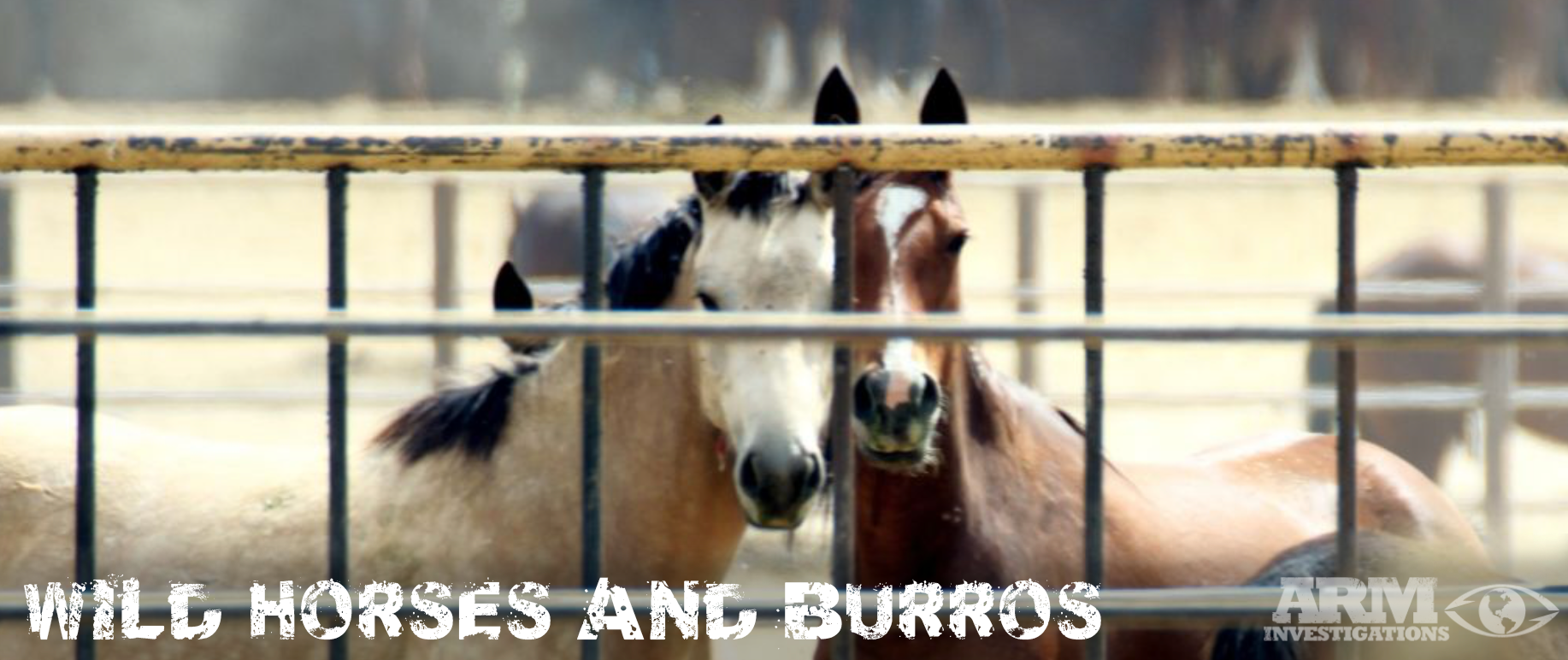
ARM has been actively investigating the U.S Department of the Interior (DOI) since our organization’s inception. The DOI protects our country’s natural resources and heritage, but they are currently removing America’s wild horses and burros off our public lands.
Wild horses and burros are a ‘National Treasure’ in the United States and are considered by many as being the backbone of this country. Unfortunately, they are also on the verge of becoming a myth. Presently, there are only an estimated 25,000 wild horses left roaming free, and their presence in the wild is on an alarming and rapid decline.
The Bureau of Land Management (BLM) and DOI oversees the roundups and care of the animals. Most of the land is in 12 Western states, including Alaska. Helicopters chase down the horses, up to 20 miles, over jagged volcanic rock, and drive them into overcrowded makeshift pens. There is no consideration given towards foals or injured horses that struggle to keep up in the panic-driven stampede.
Once rounded up, the wild horses go to government-run holding facilities. To date, an estimated 47,000 horses and burros live in pens with little or no shade, almost double the number of wild horses left to roam free in America.
While some wild horses end up being adopted out through BLM programs, many spend the rest of their lives confined in these facilities. At these facilities, some wild horses become lab animals used for the research of contraceptive and various new drugs for horses, many of the wild horses are dealt the hand of abuse and cruelty and end up in rodeos as bucking broncos.
Even more devastating, and often following time served in a rodeo, (as with ARM’s rescued mustang EPIC) the horses wind up on illegal slaughter farms destined for horse meat. At these farms, horses die in brutal ways to fuel the black market horse meat trade for human consumption.
Not precisely an acceptable form of ‘protection’ for one of America’s greatest heritage.
Besides the desolate conditions, cruelty, and the diminished fate of these horses, the Wild horse roundups have become an economic burden. They cost taxpayers up to USD 80 million per year, a cost to the USA that is unnecessary, and when left to roam free, the horses are causing no financial responsibility.
One of the main contributing factors leading to the roundup demand is the ongoing battle with local ranchers who believe that they are more entitled to utilize the limited grazing and water sources, found on the ‘public land’ profitable cattle industry. The war between the wild horses free roaming rights is becoming overshadowed by the ranchers’ greedy needs. Investigators have often witnessed lush grass parcels of land and water sources fenced off from the horses. Inside the fences, cattle graze and drink from fresh lakes while on the other side of the fence, wild horses are starving, dying of thirst and perishing under the extreme desert conditions.
The wild horses are ‘supposed to be’ protected under the Wild free-roaming horse and Burro Act of 1971, however, the Department of the Interior and the US Forest Service have a tainted perception of their rights to roam free and often see them as ‘feral’ nuisances. ARM’s investigations and documentation are crucial in protecting and ensuring these iconic wild horses’ survival.
